Miniature Schnauzer

About The Breed
The bushy beard and eyebrows give Minis a charming, human-like expression. The hard, wiry coat comes in three color patterns: salt and pepper, black and silver, and solid black. Created to be all-around farm dogs and ratters, they are tough, muscular, and fearless without being aggressive. The Miniature Schnauzer is a bright, friendly, trainable companion, small enough to adapt to apartment life but tireless enough to patrol acres of farmland. They get along well with other animals and kids. Minis are sturdy little guys and enjoy vigorous play. Home and family oriented, they make great watchdogs.
History
The American Kennel Club accepted registration of the new breed in 1926, two years after Miniature Schnauzers were introduced to the United States. The American Miniature Schnauzer Club was formed in 1933, from the older parent club Wire-Haired Pinscher Club of America which also included Standard Schnauzer, and initially both competed in the Working Group until 1927. The start of the modern Miniature Schnauzer in the United States is considered to have a beginning in 1924 when four dogs were imported from Germany. It is argued that almost all American-bred Miniatures partly descend from them, and between 1926 and 1936, 108 more dogs were imported. One of the most notable champions was Ch. Dorem Display, born in 1945 and lived to be nearly fourteen. It is claimed that many champion Miniature Schnauzers in America can trace its lineage back to Dorem Display. Miniature Schnauzers were the 11th most popular breed in the U.S. in 2008, falling to 17th most popular in 2016
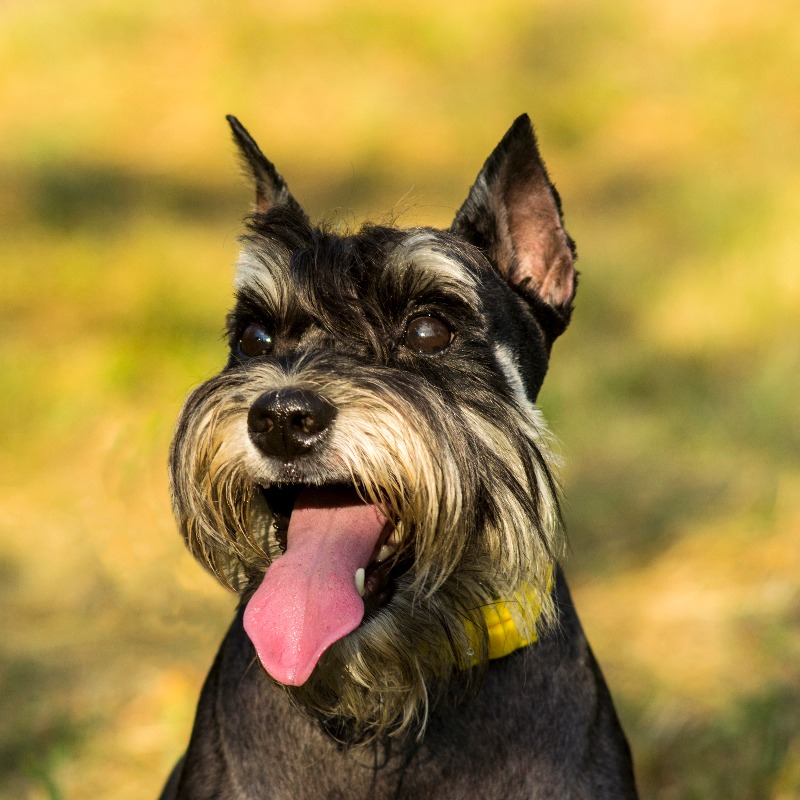
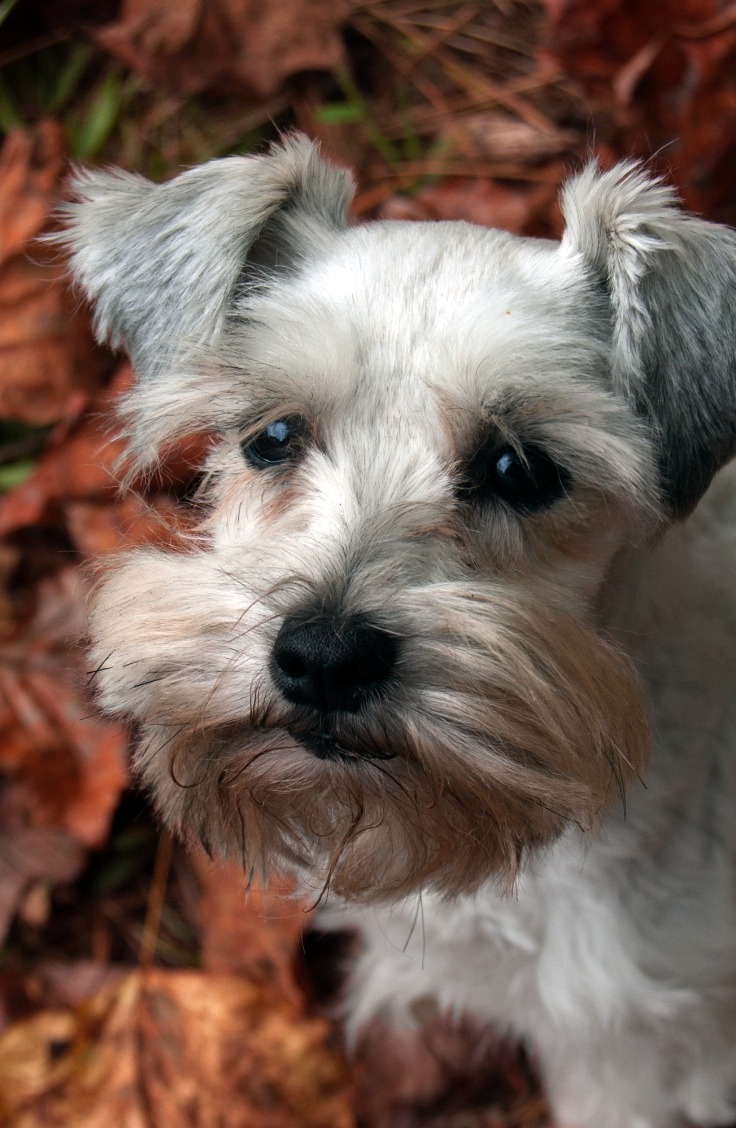
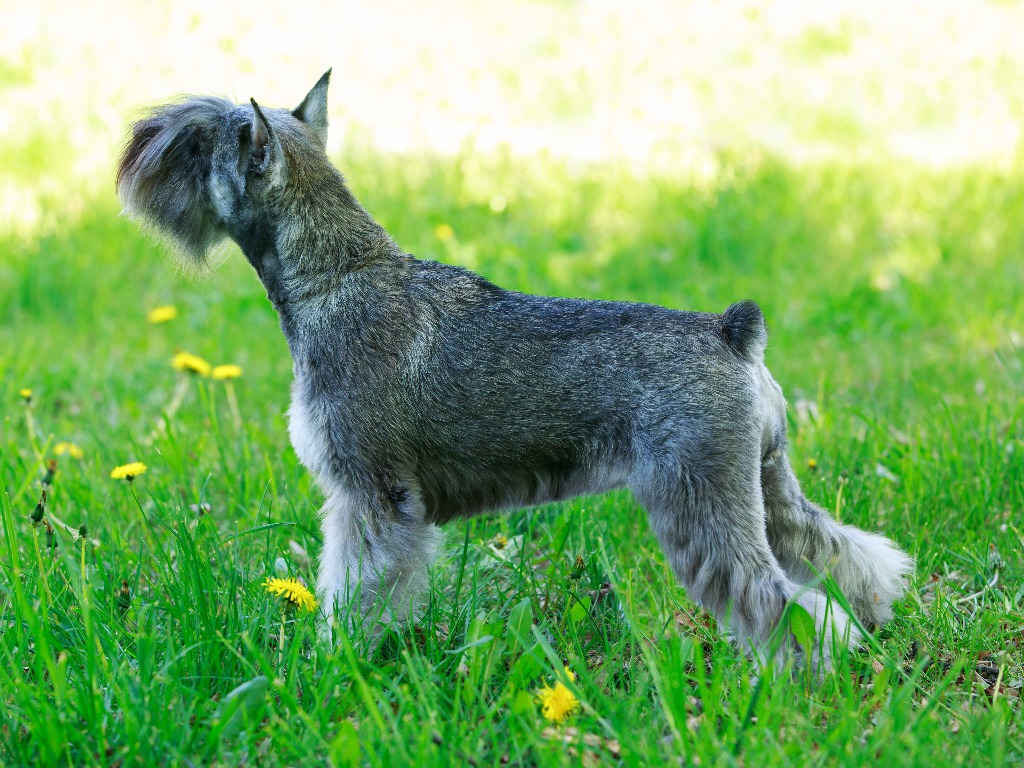
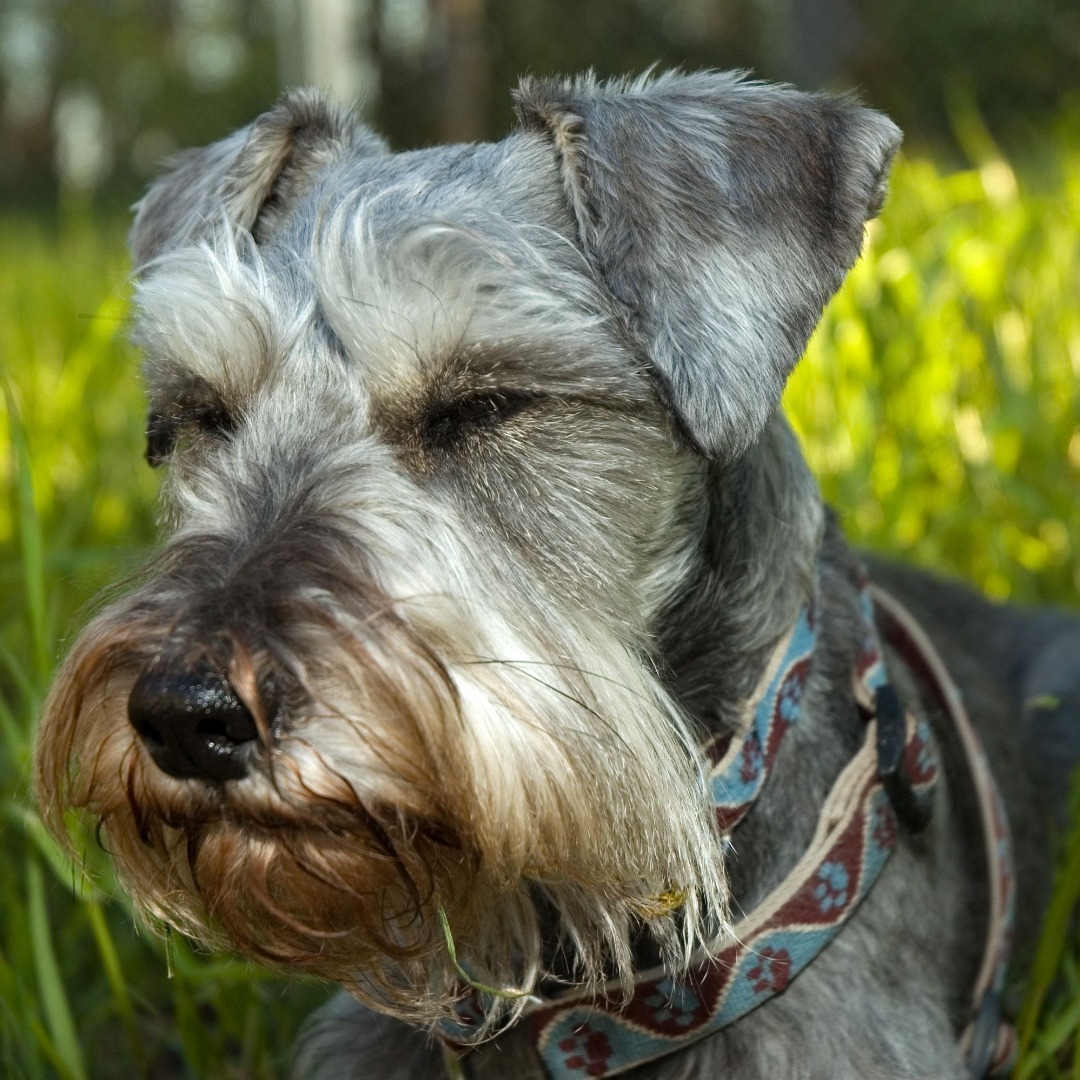
Appearance
Miniature Schnauzers are often described as non-moulting dogs, and while this is not entirely true, their shedding is minimal and generally unnoticeable. For this reason, Schnauzers are considered a hypoallergenic breed. They are characterized by a rectangular head with bushy beard, mustache, and eyebrows; teeth that meet in a “scissor bite”; oval and dark colored eyes; and v-shaped, natural forward-folding ears (when cropped), the ears point straight upward and come to a sharp point. Their tails are naturally thin and short, and may be docked (where permitted). They will also have very straight, rigid front legs, and feet that are short and round (so-called “cat feet”) with thick, black pads. An intact schnauzer tail is very expressive.
Grooming
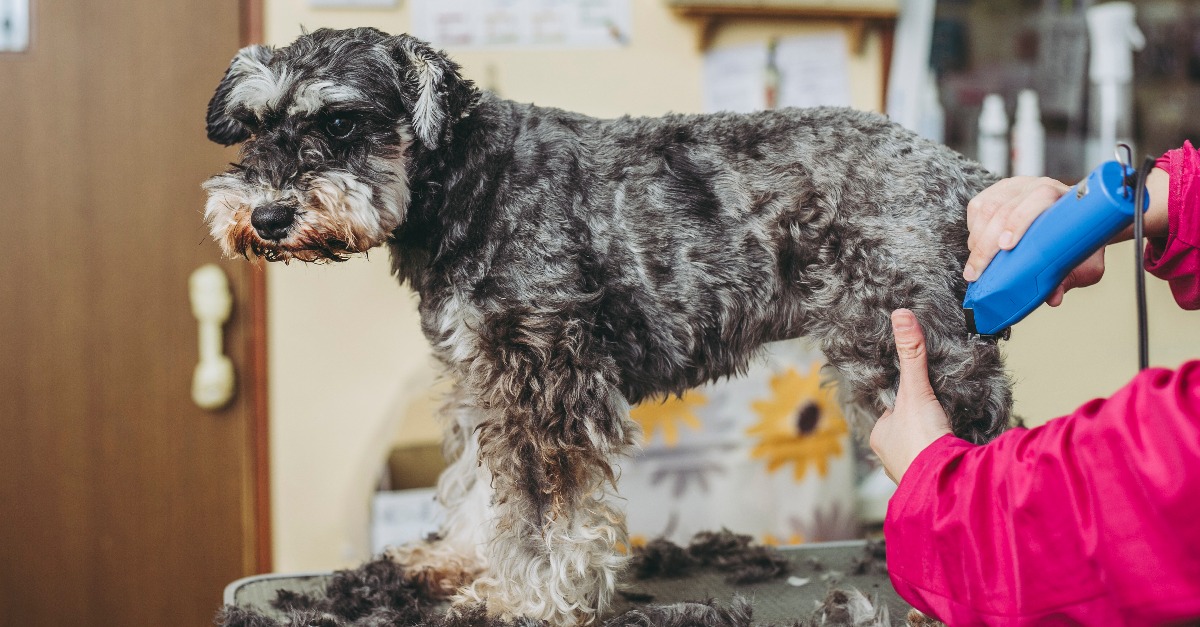
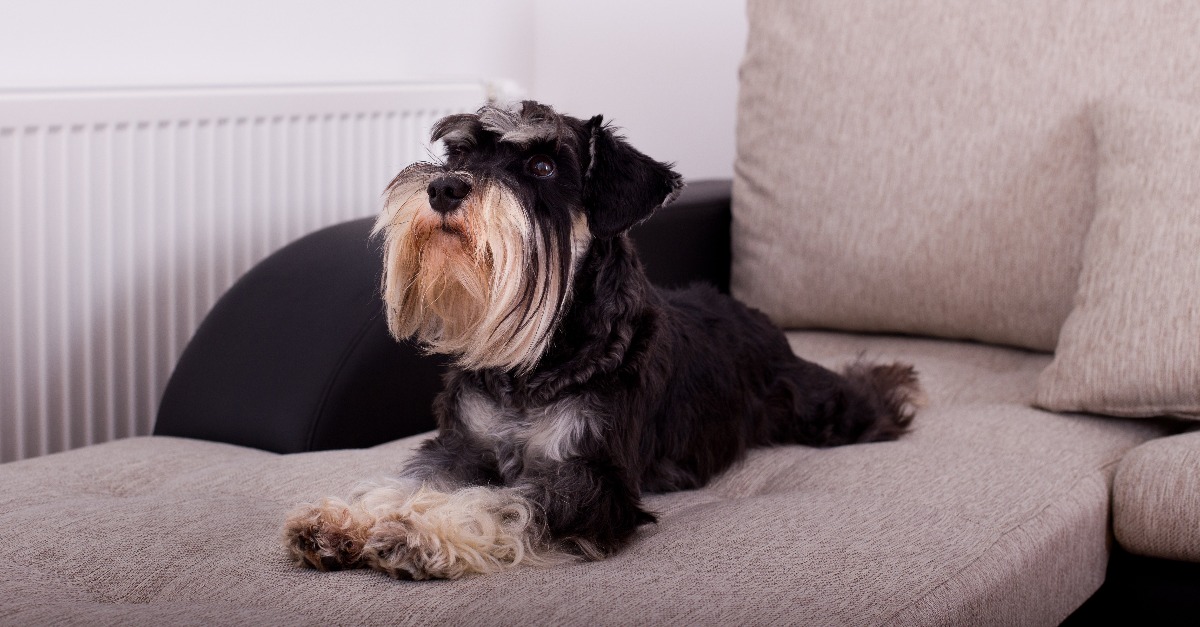
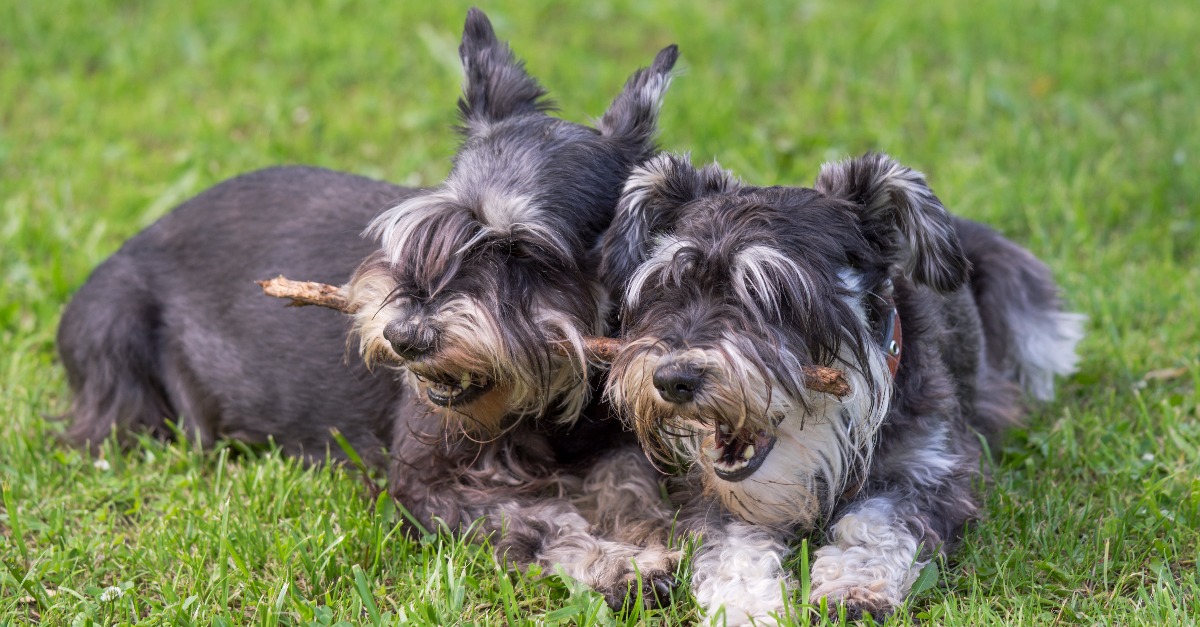
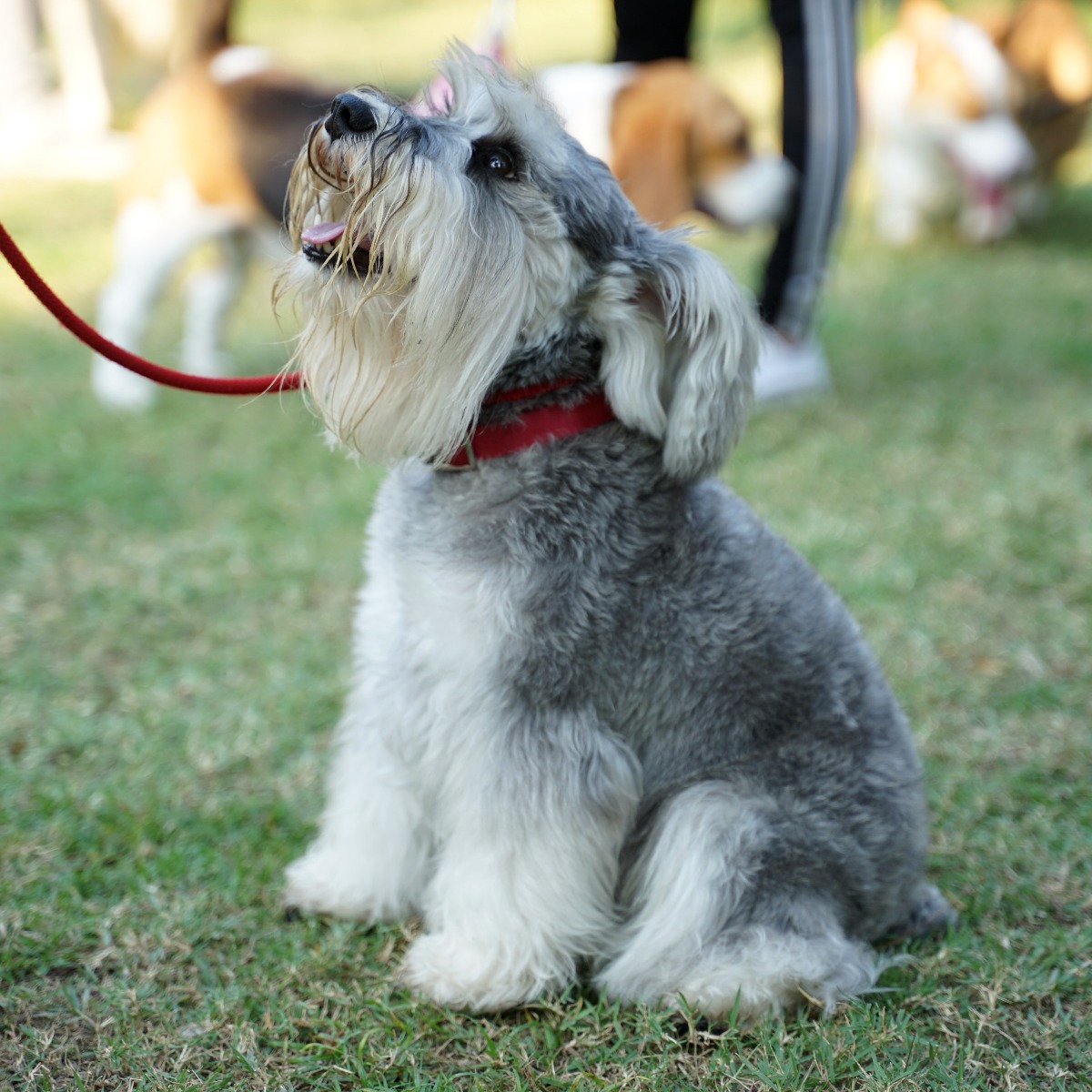
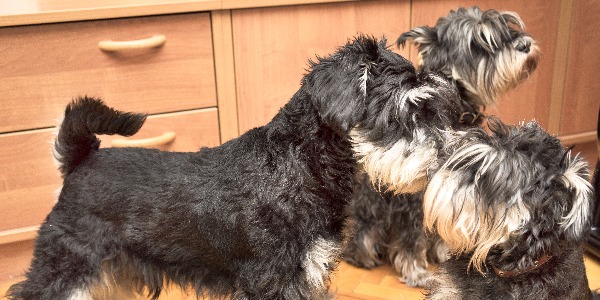
Temperament
They are highly playful dogs, and, if not given the outlet required for their energy, they can become bored and invent their own “fun”. As an example: many Miniature Schnauzers enjoy playing with paper, and will happily shred wrapping paper, toilet paper, etc. if left unsupervised when bored or seeking attention. Miniature Schnauzers can compete in dog agility trials, obedience, showmanship, flyball, and tracking. Schnauzers have a high prey drive, which means they may chase other small animals and hence should not be off leash when not in a fenced area. Based on Stanley Coren’s book “The Intelligence of Dogs” (2006) ranking methodology, the Miniature ranked 12th out of 140 breeds within 79 ranks on the ability to learn and obey new commands i.e. working and obedience intelligence, being grouped among “excellent working dogs”. Additionally, experts ranked the Miniature as fifth among top 15 breeds at watchdog barking ability.
Health
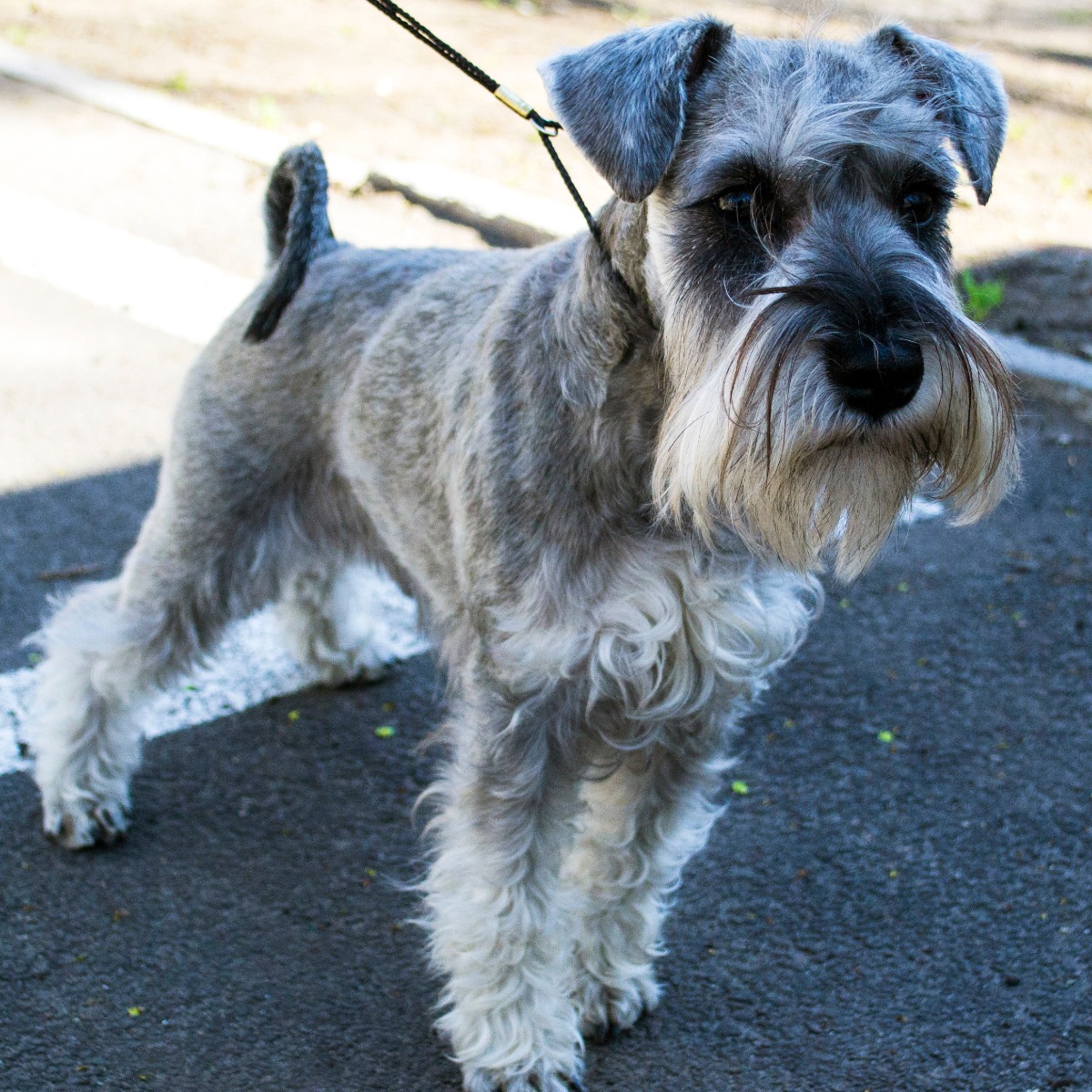
See Our Available Pups!
Currently Available & Upcoming Litters
